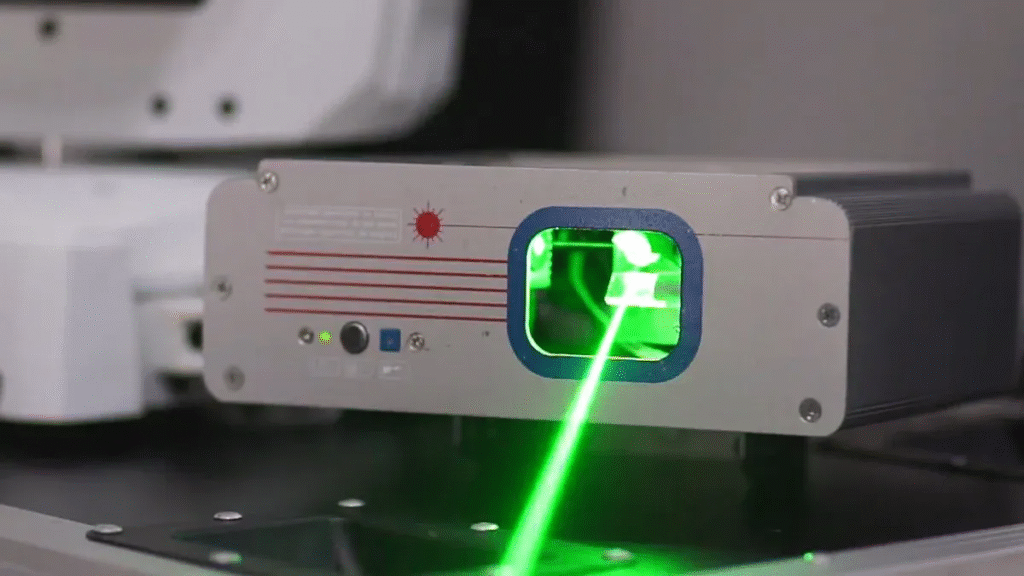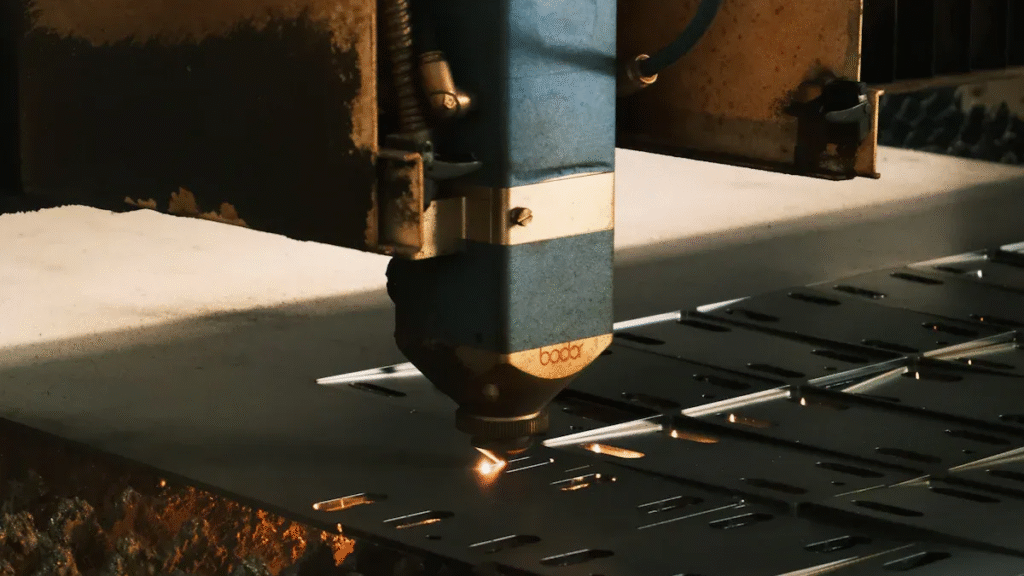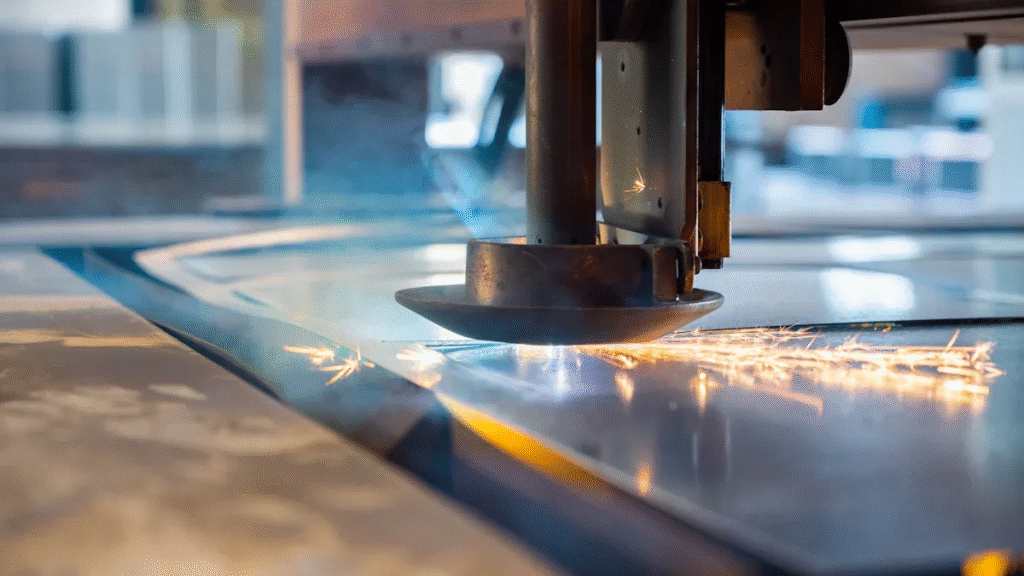You need a CO2 Laser Source that consistently delivers clear results. Precision helps you get perfect cuts and marks, even on hard shapes. Reliability means you can count on the laser to operate reliably every day without interruption. Versatility lets you use it with many materials and jobs. When you look at choices, think about what your work needs and what your industry asks for.
Wichtigste Erkenntnisse
- Pick a CO2 Laser Source that gives very clear cuts and marks. This helps your designs stay correct and look good.
- Find laser systems that work well for a long time. Good warranty and support help you save time and money on fixing things.
- Choose a CO2 Laser Source that can work with many materials. This lets you do different projects without buying more machines.
- Think about the power choices before you buy. Make sure the power matches the thickness of your materials for the best results.
- Make safety features very important in your CO2 Laser Source. Check that it meets safety rules to keep your workplace and workers safe.
CO2 Laser Source Overview

Precision
You want your CO2 Laser Source to give sharp and clear results every time. Precision is very important for small designs or when you need exact cuts. The best brands are known for being very accurate in their laser systems. The table below lists some top brands that are famous for high precision:
| Brand | Beschreibung |
|---|---|
| TRUMPF | A leader in laser technology, offering a variety of CO2 laser systems and ISO 9001 certified. |
| Viavi Solutions | Manufactures commercial and OEM laser marking systems, known for quality in defense and industry. |
| Warren-Knight | Provides high-quality precision industrial laser instruments since 1908, focusing on innovation. |
| Westbrook Engineering | Offers innovative solutions in fabricating machinery, including lasers. |
| Newport Corporation | Supplier of advanced laser solutions for industrial and scientific markets. |
| Novanta | Develops precision motion products and laser systems for various industries. |
These brands help you get neat cuts and clear marks. When picking a CO2 Laser Source, look for ones with good control and steady accuracy. This helps your products meet tough quality rules.
Reliability
You need a CO2 Laser Source that works well every day. Reliability means your machine breaks down less and needs fewer fixes. Most CO2 laser tubes last from 2,000 to 10,000 hours. Some, like Kern’s KT laser sources, work for at least 10,000 hours. Some even last up to 20,000 or 30,000 hours. This long life keeps your work going without many stops.
Support and warranty are also important for reliability. The best brands give strong warranties and helpful support. Here is a quick list of what you can get:
- Epilog Laser: 2-year warranty, U.S.-based support, Mon-Fri, 6 am- 5 pm MST.
- Trotec: 2-year warranty (up to 5 years), 24/7 online support, local technicians available.
- Boss Laser: 2-year warranty, U.S.-based support, Mon-Fri 9 am5 pm5pm EST.
Tip: Always check the warranty and support hours before you buy. Fast and good help can save you time and money.
Versatility
You want your CO2 Laser Source to work with many materials. CO2 lasers can cut wood, plastics, textiles, and some metals. This lets you do many different jobs and projects. You can change the settings for each material to get the best results.
Versatility means you can use one machine for many things. You can cut, engrave, and mark with the same system. This saves space and lowers costs. When you pick a CO2 Laser Source, make sure it works with the materials you use most. This helps you get the best value for your money.
Eigenschaften
Tube Technology
You want your CO2 Laser Source to have good tube technology. Most top systems use RF metal or ceramic tubes. These tubes last longer than glass tubes. They also work better and break less often. You get a smaller spot size with these tubes. This means you can make finer cuts and marks. The table below shows how RF metal and ceramic tubes are different from glass tubes:
| Feature | RF Metal/Ceramic Tubes | Glass (DC) Tubes |
|---|---|---|
| Serviceability | Longer warranties, rechargeable | Limited serviceability |
| Durability | More durable, better resistance | Less durable |
| Lifespan | Much longer operational life | Shorter lifespan |
| Pulse Rate | Higher pulse rate, faster engraving | Limited pulse rate |
| Spot Size | Smaller spot size, finer details | Larger spot size |
| Cost | More expensive | More cost-effective |
RF metal or ceramic tubes give better results. They also break down less often. These tubes come with longer warranties. This helps you feel safe about your machine.
Power Options
You need to pick the right power for your job. CO2 lasers can have low or high power. Thin materials need less power to cut. Thick materials need more power to cut. More power gives better cuts and faster work. If you do many jobs, high power saves time and money. Low-power lasers are good for small jobs. They cost less to use. Match the power to your needs for best results.
- Thinner materials: lower power
- Thicker materials: higher power
- High-volume jobs: higher power improves efficiency
- Low-volume jobs: lower power saves costs
- Higher power: better quality, more energy use
Automation
Automation helps you work faster and make fewer mistakes. Many CO2 Laser Source systems use cameras to help place parts. You can put pieces in any direction and still get good marks. Smart computer programs guide the laser for accuracy. You can mark products quickly and keep up with your work. The table below shows important automation features:
| Feature | Beschreibung |
|---|---|
| Flexible positioning | Place workpieces in any orientation, no fixtures needed |
| Precision algorithms | Minimize errors, ensure consistent quality |
| Seamless integration | Works with automated processes for real-time marking |
| High resolution | Positioning accuracy up to 0.02 mm |
You get very accurate marks every time. Automation is helpful for hard jobs or detailed patterns.
Safety
Safety is important in every workplace. Good CO2 Laser Source systems have many safety features. Safety interlocks stop the laser if the door opens. Fire extinguishers and air systems keep the area safe. Workers must wear safety gear when needed. Warning labels remind you about laser dangers. Laminated safety glass keeps your eyes safe while you watch. Keeping your area clean and handling materials right lowers risks.
| Safety Feature | Beschreibung |
|---|---|
| Safety Interlocks | The laser stops if the bay door opens |
| Fire Extinguisher | CO2/ABC extinguisher nearby |
| Active Ventilation Systems | Removes toxic fumes |
| Personal Protective Equipment | Required for operators |
| Warning Labels | Alerts for radiation hazards |
| Laminated Safety Glass | Blocks CO2 laser radiation |
| Clear Workspace | Reduces accident risks |
| Material Handling | Safe storage and handling |
Tip: Only trained people should use the laser machine. Do not cut shiny materials. Keep flammable things away from the system.
Materials & Applications

Supported Materials
A CO2 Laser Source works with many materials. This makes it useful for lots of jobs. You use materials that take in laser energy easily. Some examples are glass, plastics, and wood. You can also cut and engrave metals and plastics. Here are some materials you can use:
- Holz
- Hardboard
- Foam
- Felt
- Brass
- Leather
- Aluminum
- Rubber
- Paper
- Plastic
- Carbon steel
- Cork
- Carbon fiber
- Fabric
- Stainless steel
You must change your settings for each material. Shiny metals need special power settings. Some plastics can melt if you use too much power. Ceramics need careful handling so they do not crack. You get better results when you match the settings to the material.
Tip: Test your material before you start a big job. This helps you avoid mistakes and get good results.
Industrial Uses
You use a CO2 Laser Source for many jobs. You can cut, mark, engrave, score, and slit things. Each job needs different settings and ways to work. You can clean surfaces and add textures, too. You engrave metals, plastics, wood, leather, and ceramics. You make frosted designs on glass. You can put logos and serial numbers on electronics. You engrave barcodes and QR codes for tracking. You can personalize awards and trophies. You also decorate fabric and textiles.
Here is a table that shows how engraving and scoring are different:
| Application Type | Beschreibung | Key Settings |
|---|---|---|
| Engraving | Takes away material and makes a dip. | Change power and speed for deeper marks. |
| Scoring | Makes a thin line but does not cut all the way. | Use low power for a shallow groove. |
You pick the right job for what you need. You get good results when you set your machine the right way.
Choosing a CO2 Laser Source

Needs Assessment
You should know what you need before picking a CO2 Laser Source. Think about the materials you use and how thick they are. You also need to know how exact your cuts must be. Speed matters too, so decide how fast you want each job done. The power of the machine is important for your tasks. The control system can help you work faster and easier. Good service after you buy keeps your machine working well for years. The table below lists things you should think about:
| Factor | Beschreibung |
|---|---|
| Material and thickness matching | Find out what materials you use most and pick the right laser power for cutting. |
| Cutting accuracy and speed | Decide how accurate and fast you need to cut for your work. |
| Equipment power and efficiency | Pick a power level that works well and does not waste energy or money. |
| Control system | Look for smart control systems that make work easier and faster. |
| After-sales service | Check if the company gives good help and support for your machine. |
| Cost considerations | Think about how much the machine costs now and later. |
Match the laser power to the materials you use most often. Metals like aluminum and copper need more power because they reflect light and melt at high temperatures. Wood and acrylic need less power, but you must be careful not to burn them. Thick materials need more power, but thin ones can use less.
- Metal materials: Need more laser power.
- Non-metal materials: Use less power, but watch for burning.
- Material thickness: Thicker materials need more power.
Cost & ROI
You want your money to go far when you buy a CO2 Laser Source. The price includes what you pay first and what you pay over time. Look at how long the warranty lasts and how good the support is. A good warranty saves you money if something breaks. Most companies give a 12-month warranty for parts and a 2-year warranty for the laser source. Free parts during the warranty help you avoid extra costs. The table below shows how warranty and support change your total cost:
| Factor | Impact on Total Cost of Ownership |
|---|---|
| Warranty Length | Changes how much you pay for repairs and how reliable the laser is. |
| Technical Support | Affects how much you spend on fixing and running the machine. |
- A good warranty helps you avoid surprise repair bills.
- Free parts are given while the warranty lasts.
Think about how much energy the machine uses and how often you need to fix it. High-power lasers cost more to run, but they finish jobs faster and do more work. If you want to use the machine for many years, strong support and a long warranty help you save money.
Safety Standards
Your CO2 Laser Source must follow safety rules. Top brands follow rules from groups like ANSI, OSHA, FDA, and IEC. These groups make rules for safe use in places like schools, hospitals, and factories. The table below lists the main rule makers:
| Regulatory Body | Beschreibung |
|---|---|
| ANSI | Makes laser safety rules for military, medical, school, and factory use (ANSI Z136 series). |
| OSHA | Sets rules for safe laser use at work. |
| FDA | Checks laser products in the U.S., especially for medical and business use. |
| IEC | Makes global laser safety rules (IEC 60825). |
Companies show they follow rules by marking their products with the CE mark. Check that your machine meets EN 60825-1 for lasers and EN 60825-2 for fiber optic lasers. Always look for proof that the machine follows these rules. This keeps your workplace safe and helps you avoid trouble.
Tip: Ask for safety papers before you buy. Make sure the machine has warning labels and safety locks.
Support
You need good help and quick service to keep your CO2 Laser Source working well. The best companies have big teams to help customers. Companies with more than 80 workers can give better help. Fast answers, usually in less than one hour, mean you get help quickly. Pick brands with at least five years of experience for good service. The table below shows what to look for:
| Evidence Type | Beschreibung |
|---|---|
| Technical Support | Companies with 80+ workers can give strong technical help. |
| Service Availability | Companies with less than one hour response time give fast help. |
| Operational History | Pick companies with five or more years of work for stability. |
Lifetime help gives you peace of mind. You can get help for fixing and keeping your machine working any time. Help is given by phone, email, or apps like WhatsApp. This helps you get the most from your machine.
Note: Good help and service make your work easier and protect your money.
A high-quality CO2 laser source has strong power. It cuts fast and makes precise marks. The table below shows these features:
| Key Specification | Beschreibung |
|---|---|
| Power Output | 20W to several kW, fits many applications |
| Cutting Speed | High-speed cutting for thin materials |
| Beam Quality (M²) | Fine cuts and marks |
| Cooling Method | Water cooling keeps the system stable |
| Wavelength | 10.6 micrometers, ideal for non-metals and some metals |
Choosing the right features helps your work go faster. It also means you do less by hand. You should ask experts for advice. They know which machine works best for your materials. Experts help you pick a good balance between cost and performance. They also tell you about new trends in the industry.
- Experts help you pick the best machine for your materials
- They give advice on cost and how well it works
- They share updates about new things in the industry
Talk to suppliers or ask for a demo. This helps you find the best machine for your business.
FAQ
What materials can you cut or engrave with a CO2 laser source?
You can use a CO2 laser to cut wood, acrylic, and leather. It also works on glass, paper, rubber, and some plastics. You can mark coated metals, too. Always make sure your material works with your laser system.
How often should you maintain your CO2 laser source?
Clean the optics every week. Check the cooling system once a month. Change filters when needed. Doing regular care helps your machine last longer and work well.
What safety gear do you need when operating a CO2 laser?
Always wear laser safety glasses. Keep your workspace neat and clear. Use good ventilation to get rid of fumes. Follow all safety steps in your machine’s manual.
How do you choose the right power level for your application?
| Material Thickness | Suggested Power (W) |
|---|---|
| Thin (≤3mm) | 30–60 |
| Medium (4–8mm) | 60–100 |
| Thick (≥10mm) | 100+ |
Pick a power level that fits your material and job size. This helps you get the best results.




